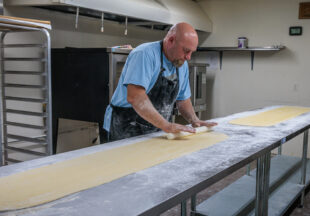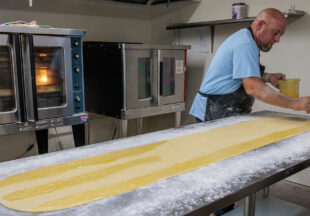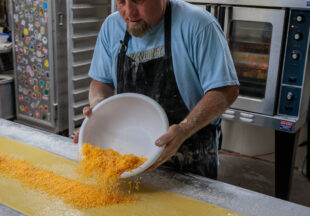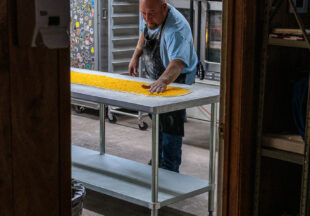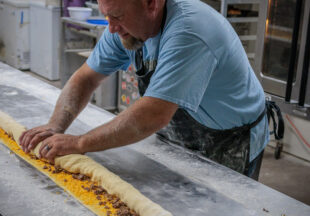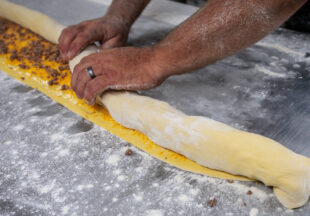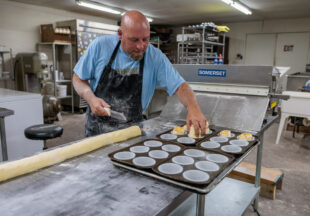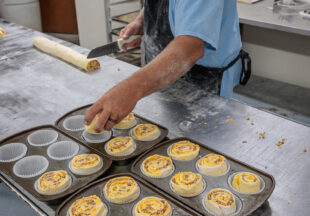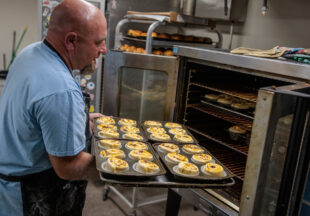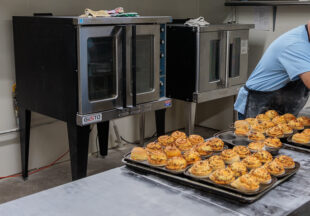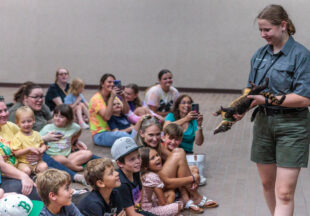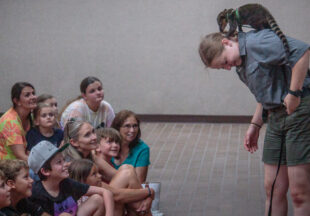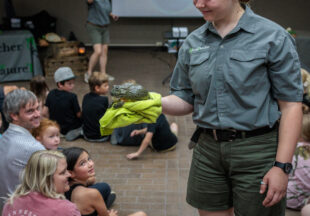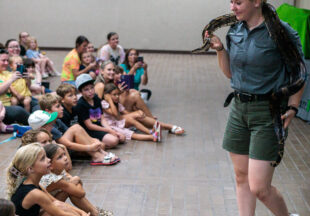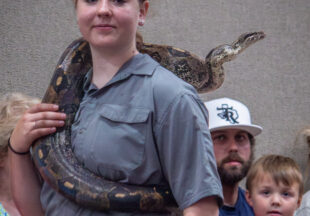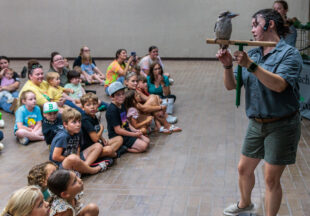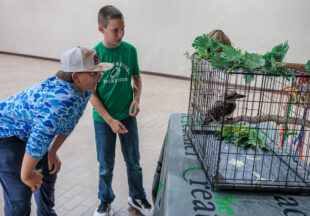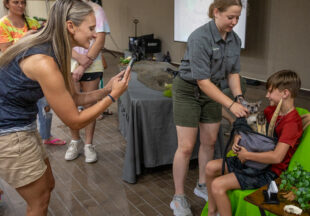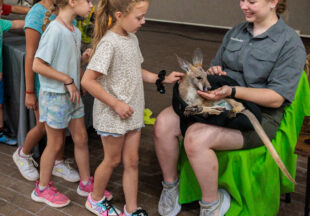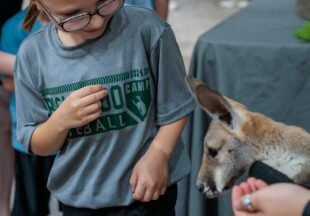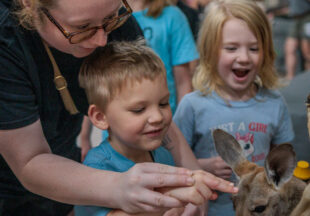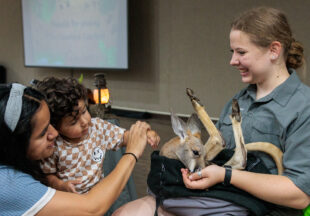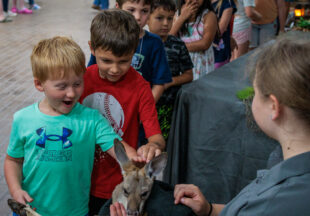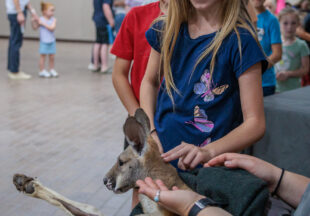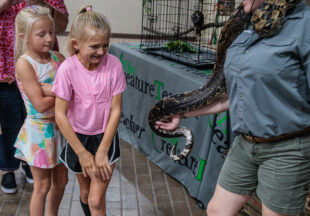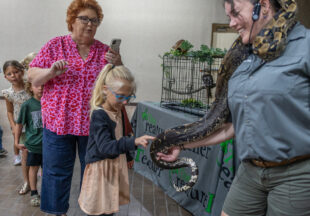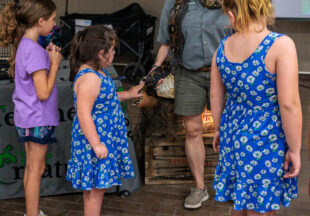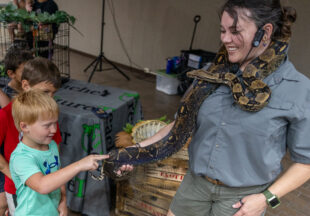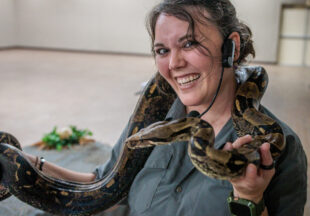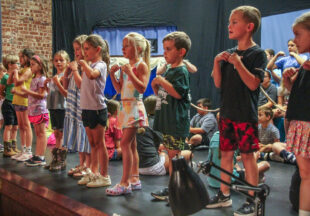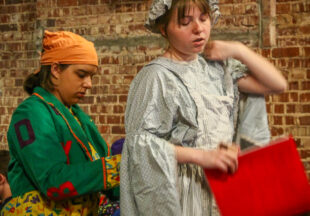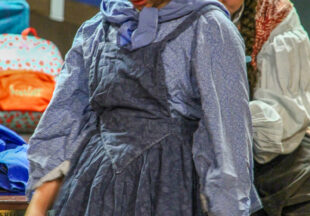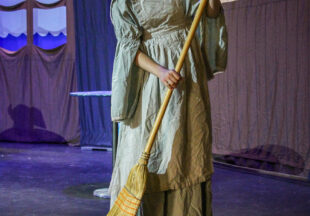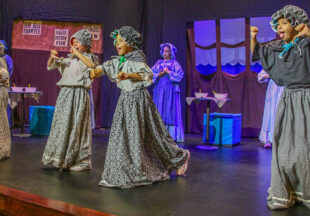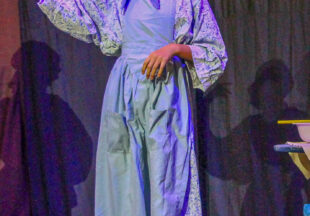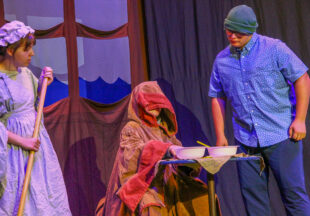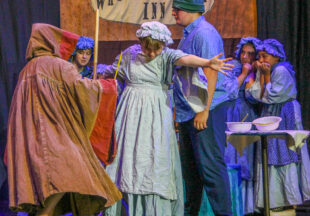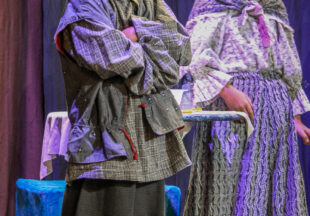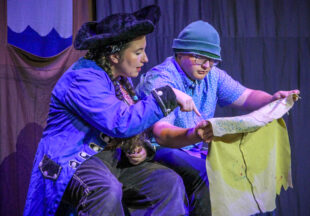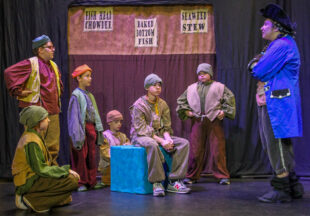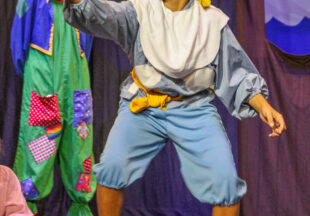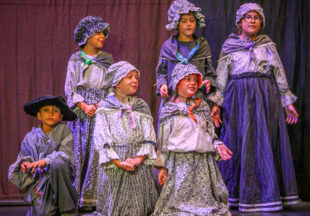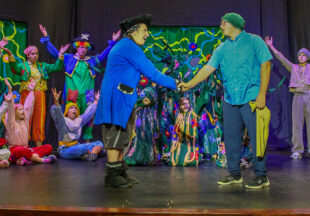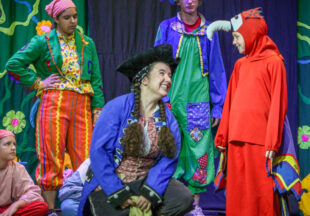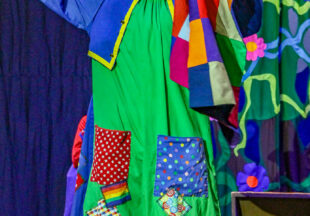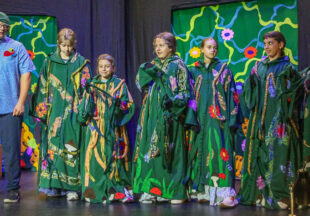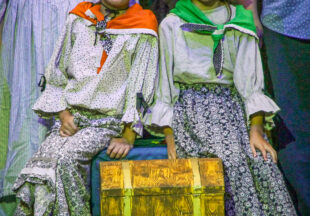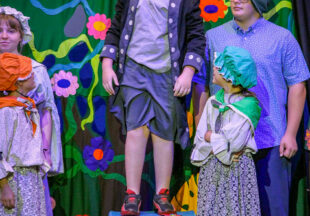Dispatch from the ‘Path of Totality’
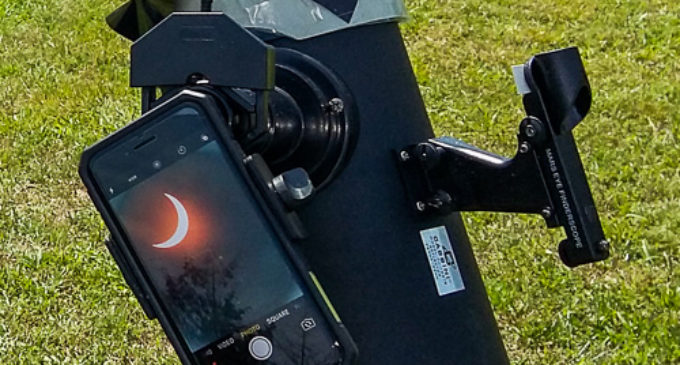
It was a hot and muggy afternoon in northeastern Missouri where thousands of people gathered in St. Clair on Monday, Aug. 21, 2017, to watch the total solar eclipse. Traveling the almost 700 miles from Breckenridge, we –Breckenridge Texan Publisher/Managing Editor Tony Pilkington and Editor/Writer Carla McKeown – were on the scene, along with our daughter and a friend.

Carla McKeown and Tony Pilkington of Breckenridge watched Monday’s total solar eclipse in St. Clair, Missouri, with their daughter and a friend. (Photo by Anna Pilkington)
St. Clair, population 4,718, was right in the middle of the “Path of Totality,” the name given to the approximately 70-mile swath across the U.S. that experienced the total eclipse. The rest of the country could only see varying degrees of a partial eclipse.
The town had 10 viewing stations set up around town, as well as a variety of other locations offering spots for visitors to watch the eclipse. We chose to stop at the VFW Post 2482 in St. Clair. They offered free parking, a large field from which to view the eclipse, and plenty of refreshments. Additionally, they were selling bottle water, hot dogs, T-shirts and more, and all the proceeds benefited the VFW.
We spent Sunday night in Springfield, Missouri, and got up early to drive to St. Clair. We were a little concerned about our choice of viewing sites, since every weather prediction service was forecasting cloudy skies and a chance for rain for the exact moment of total solar eclipse. Sunday night, Springfield was hit by strong thunderstorms, and some places in the area experienced flooding.
But, the forecast didn’t deter most people. By the time we got to St. Clair at about 9:30 Monday morning, most of the VFW parking lot was packed and groups of families and friends were already set up in the shade of the trees on the property. About an hour later, the parking attendants were turning people away at the gate, and traffic was beginning to pile up on Interstate 44, which runs in front of the VFW.
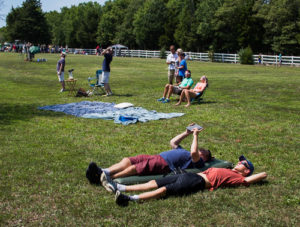
Eclipse watchers chose a variety of viewing methods at the VFW in St. Clair, Missouri, which was in the middle of the “Path of Totality.” (Photo by Tony Pilkington/Breckenridge Texan)
The crowd was a diversified group, representing a cross-section of society. We met several fellow Texans. Additionally, TV news crews were on the scene, including one from the Fox channel in St. Louis.
At 12:15, about an hour before the maximum point of the total eclipse, the temperature was 90 degrees, and the humidity was 63 percent, according to the National Weather Service. A few fluffy white clouds drifted across the sky, but they weren’t a problem. Visitors from all over the country were mingling with each other as they all waited for the sky show to begin. There were serious eclipse watchers there with telescopes and large cameras, and less serious observers with nothing more than their eclipse glasses and a cell phone.
Prior to the actual eclipse, one of the most exciting moments for the crowd was when an ice cream truck rolled up, music blaring, and stopped along the edge of the VFW field. As soon as they heard that typical tinny nursery rhyme music, kids of all ages stopped what they were doing and ran toward their parents for money. Then, down the hill they went by the dozens to line up for ice cream to beat back the heat.
Things began to get serious when the moon first showed up in the top corner of the sun. For quite a while, though, there was little evidence of the eclipse on the ground. It was still sunny and hot. But, the weather was cooperating; no storm clouds were in sight.

Everything from telescopes to pinhole viewers were on-site in St. Clair, Missouri, for Monday’s total solar eclipse. (Photo by Tony Pilkington/Breckenridge Texan)
As the moon continued its movement across the face of the sun – at least from our vantage point – the crowd began to get more excited. People used their hands, holes in their hats, even the leaves on the trees to make pinhole viewers that showed crescent shaped light patterns on the ground, demonstrating how much of the sun was blocked out.
At about 12:50 p.m. – 25 minutes before “totality” – enough of the sun was blocked by the moon that it was starting to look like it does on an overcast day. The light started to fade, and the temperature began to drop. People moved from under the protection of the shade tree and into the open field to get a better look at the sun through their eclipse glasses.
A murmur swept the crowd as the sunlight shrank to just a sliver. And, then, it was totality. A simultaneous shout arose from the hundreds of people gathered. They whooped and hollered, screamed and cheered. It was almost as noisy as a Buckaroo football game.
Then, everyone went silent as they stared – glasses off – at the moon-covered sun. Just a hint of light peaked out around the circumference of the moon’s circle. It wasn’t quite nighttime dark, but it was definitely late-dusk. The sky was a dark blue, and a few stars popped out.

During “totality,” the moon blocked out almost all of the sun’s light. The sky darkened, and automatic lights for vehicles and buildings came on, among other activities. (Photo by Tony Pilkington/Breckenridge Texan)
Along the horizon was a 360-degree “sunset.” Normally, we only see brilliant sunrise and sunset colors in the east or the west, respectively, but during the totality phase of the eclipse, such colors were visible in all directions. As the sky darkened, the automatic lights of the building next door to the VFW and those of the vehicles out on the Interstate came on.
The VFW field was adjacent to a pond, and a few seconds into the total eclipse, frogs started croaking. Maybe it was because of the darkness; maybe the area just got quiet enough for us to hear them. Whatever the reason, there they were, adding to the ambiance.
From time to time, people in the crowd were again overcome with excitement, and another cheer would erupt and spread across the field.
And, then, much quicker than any eclipse enthusiast was ready for, the moon continued its movement, and the sun began to reappear from behind the darkness. One more shout-out for the eclipse arose, and most of the crowd started packing up their belongings to leave. A few diehard eclipse watchers stayed still, maintaining their stations, presumably until the entire event was over.
We had to get back on the road, headed for Texas, so we didn’t stay much after the totality phase. The only dim spot in our trip – pun intended – was the traffic. As we left the VFW, we pulled out into a major traffic jam. Hundreds of cars snaked through the small town of St. Clair. The north-bound lanes of I-44 headed to St. Louis looked like a parking lot with vehicles at a standstill. The side taking us south to Springfield looked like it was moving faster, but a few miles down the road, we hit gridlock that lasted until about Tulsa, Oklahoma, late in the night.
But, even horrendous traffic didn’t lessen our excitement for the eclipse experience. We’re already looking forward to the next total solar eclipse in the United States. It will take place in less than seven years – on April 8, 2024. One of the best things about that upcoming eclipse is that it will cross Texas, putting the DFW Metroplex right in the path of totality. That means that we won’t have to drive 10 hours (or 14 or 15 in post-eclipse traffic) to see it.
Story by Carla McKeown
carla.mckeown@breckenridgetexan.com
Cutline for top photo: Eclipse watchers from across the country showed up in St. Clair, Missouri, with a variety of professional and homemade viewing and recording devices. (Photo by Tony Pilkington/Breckenridge Texan)










